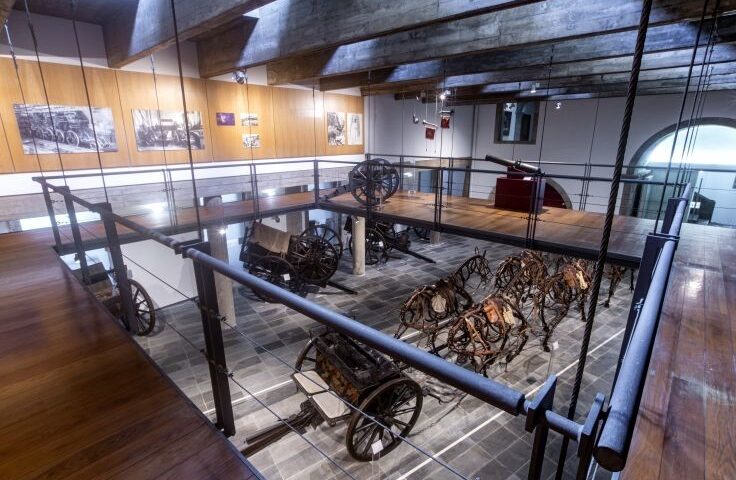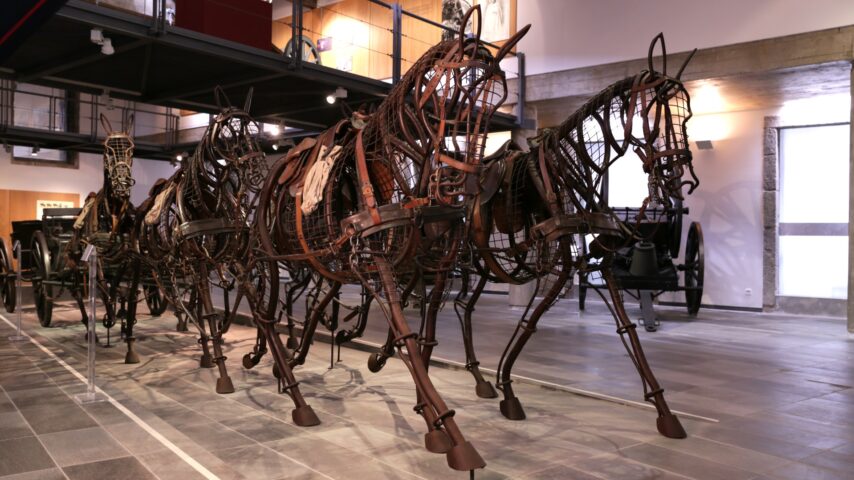São Francisco Building
Following the military reforms of the Metropolitan Army in the transition from the 19th to the 20th century, the Portuguese government modernized the artillery armament with the acquisition of rapid-fire pieces. To this end, he had appointed a commission of officers to comparatively examine the models produced in the German Krupp and French Schneider factories. This commission opted for the French model 75, considering it “the most perfect and most complete of all those they had the opportunity to see and appreciate”, and in 1904 acquired 32 batteries (128 pieces) m/904 for Mounted Artillery and 4 batteries (16 pieces) m/906 for Horse Artillery, of which the pieces in the MAH collection are part.
The product of steel technology and the innovation of hydropneumatic recoil absorption systems, the 7.5 cm Rapid Fire (TR) pieces from the Schneider Frères & Cie. factory, acquired by Portugal, were decisive in the Republican victory of October 5, 1910 and in the course of the Great War, with the French model 75 pieces equipping part of the Allied forces, including the Portuguese Expeditionary Corps (CEP) sent to France to intervene in this conflict.
In the context of World War II, at the beginning of 1941, in order to reinforce the military apparatus in the Azores, the 7.5 cm TR m/904-06 and the m/917 Schneider-Canet (the latter brought by the CEP) were distributed to the islands of S. Miguel, Terceira and Faial. On Terceira Island, the 7.5 cm TR battery, mobilized from the No. 1 Light Artillery Regiment (Évora), incorporated the 1st Light Artillery Battery and took up a position in Praia da Vitória, operating as coastal artillery. From 1943, it was stationed at Nasce Água, in Angra do Heroísmo, operating in direct support of the various sectors according to operational needs.
It should be noted that the 7.5 cm TR Schneider-Canet battery in the Angra do Heroísmo Museum is the only complete one in museum institutions, including the m/1917 harnesses, traction arms, ammunition carts and workshop carts, which are essential for quickly getting into position and preserving its combat potential.


